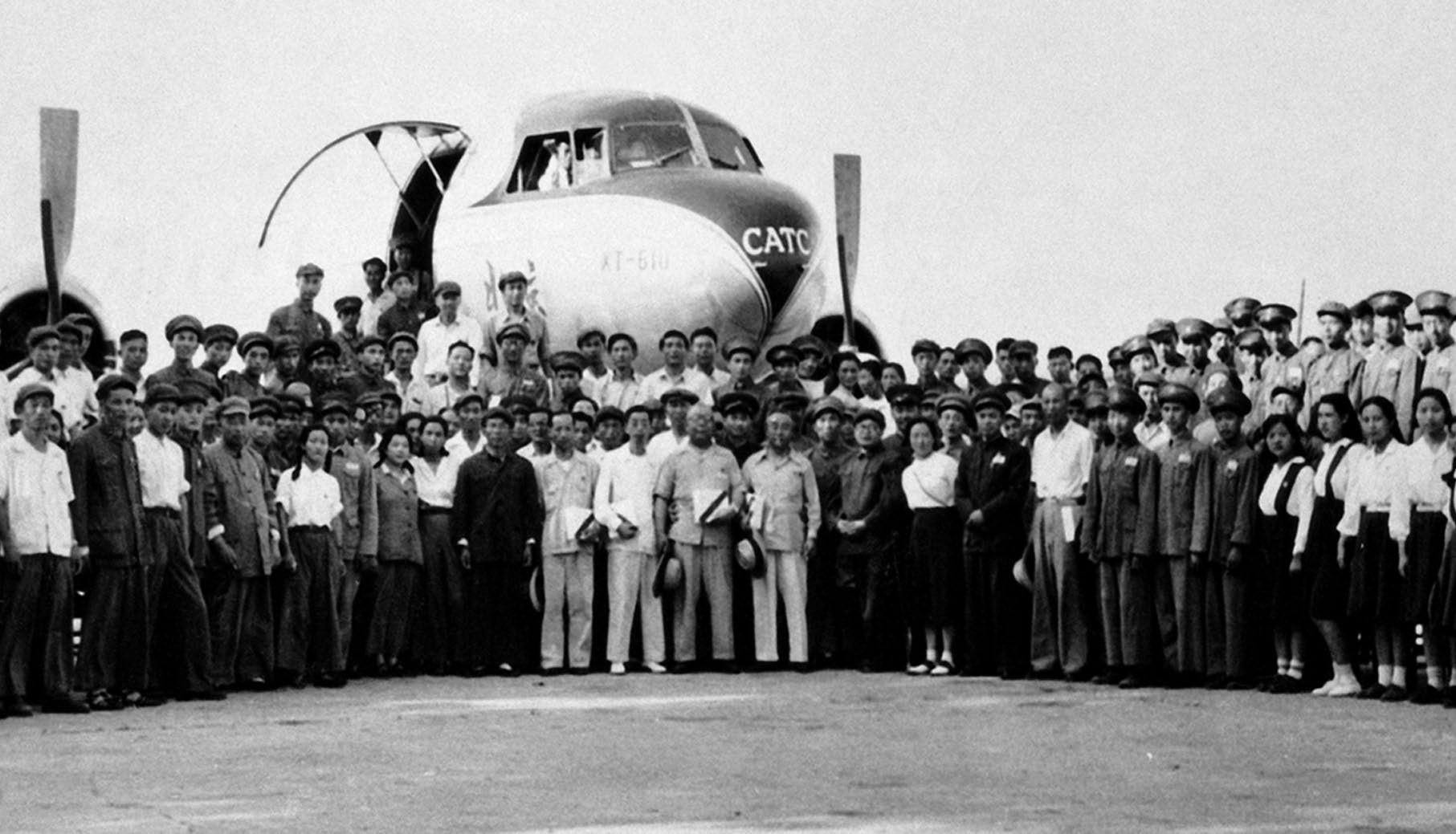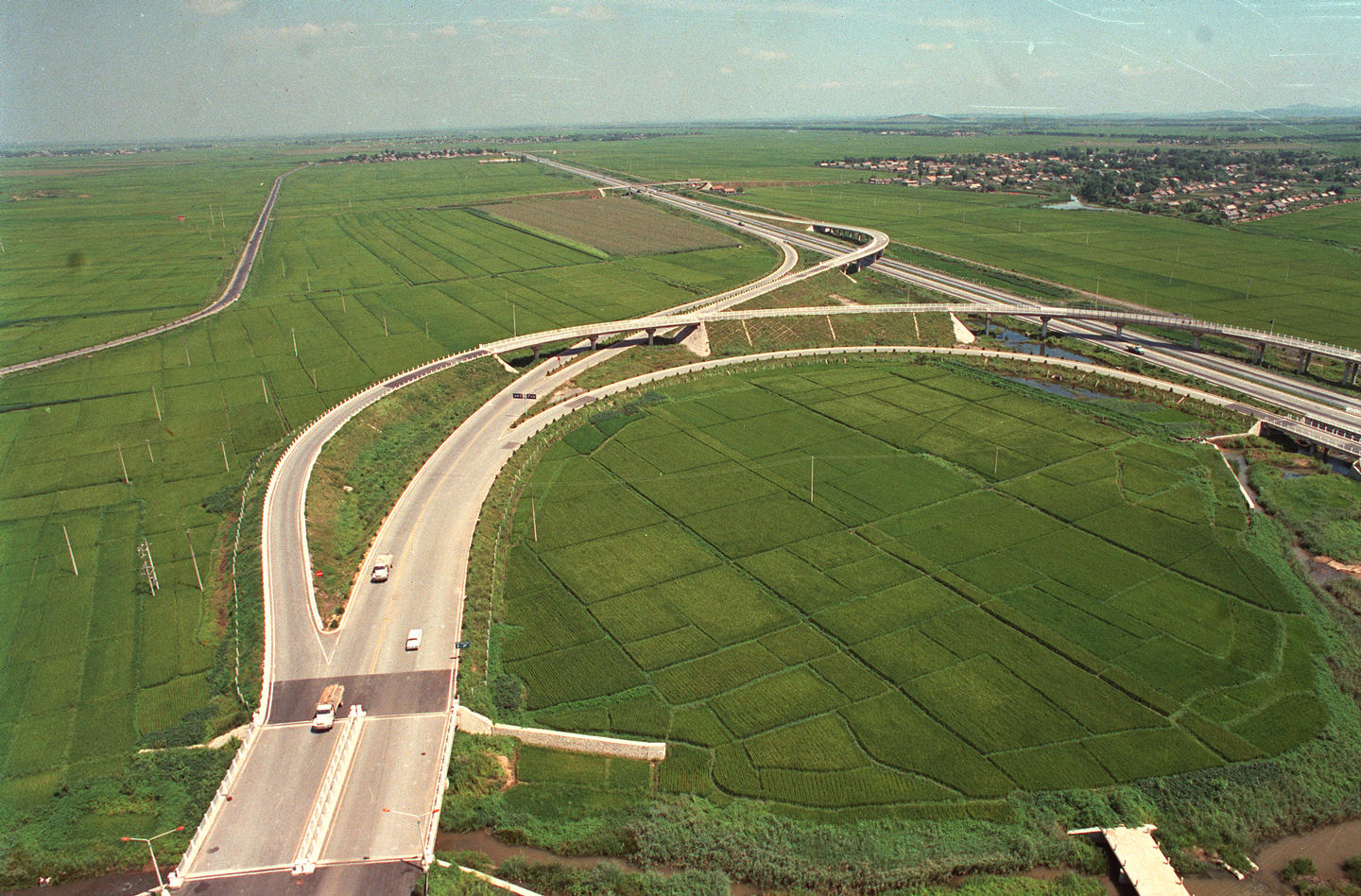BEIJING, Oct. 14 (Xinhua) -- The spring of China's transport sector arrived in the 1949-1978 period.
After the founding of the People's Republic of China in 1949, the Chinese government made clear that certain basic conditions should be created to restore China's transport sector. The country repaired facilities and equipment, and resumed water, land and air transport. It renovated or built railways, highways, ports, docks and civil airports. It also dredged major waterways, opened new international and domestic water and air routes, expanded its postal network, and increased the supply of transport equipment.

In 1953, soldiers of the Chinese People's Liberation Army were building the Xikang-Tibet Highway (renamed Sichuan-Tibet Highway in 1955) on a cliff.
With self-reliance, hard work and fearless spirit, the Chinese people braved daunting challenges and strived to build and develop a new transport network across the country.
The completion of the Sichuan-Tibet and Qinghai-Tibet highways in 1954 marked an end of Tibet having no modern highway, creating a miracle in the history of road construction on the Roof of the World with unforgiving geography. Building the two roads fostered a new spirit featuring "no fear of hardship or death, tenacious struggle, willingness to sacrifice, close bonds between the army and the people, as well as ethnic unity."

On Aug. 1, 1950, the Tianjin-Chongqing and Tianjin-Guangzhou air routes both via Hankou were launched, historically referred to as the "maiden flight of Aug. 1". The launch marked the official opening of the domestic civil air routes of the People's Republic of China.
After braving hardships and difficulties, a series of "breakthroughs" were achieved in China during the period. Following the operation of the Chengdu-Chongqing railway, China's first railway trunk line built independently and completely with domestic materials, the country built more railway lines nationwide, including Baoji-Chengdu Railway, Yingtan-Xiamen Railway, Baotou-Lanzhou Railway, Lanzhou-Xinjiang Railway, Chengdu-Kunming Railway and Hunan-Guizhou Railway. The first Jiefang truck debuted in 1956, and soon Dongfeng and Hongqi cars rolled off production lines. The Wuhan Yangtze River Bridge, China's first road and rail bridge across the Yangtze River opened to traffic. Dongfeng, China's first independently designed and built 10,000-tonne oceangoing freighter, was delivered in 1965, laying the foundation for building large vessels above 10,000 tonnes. The completion of the first subway line in Beijing in 1969 diversified the public transport system of the capital. China also built the Dalian New Port, its first 100,000-tonne-class deep-water oil port. China saw more air and shipping lines and an expanding postal network. Its transport system was connected to the rest of the world and showed the country's strong vitality.
During this period of immense changes, China transformed its weak and outdated transport sector, and embarked on a new journey of sustainable development.
(Contributed by Ma Yuzhu, Hu Pingchao, edited by Shi Chunjiao)




 A single purchase
A single purchase









